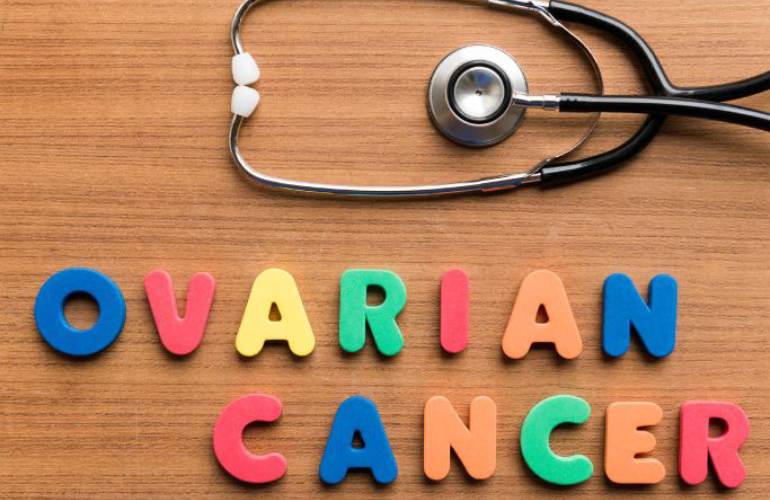Ovarian cancer is the fifth most common cancer in women and the most common cause of gynecologic cancer deaths. Approximately, one in 70 women will develop ovarian cancer in their lifetime.
 It is important that all women understand their risk for developing ovarian cancer and take steps to decrease their risks. But since the symptoms can be nonspecific and there aren’t any standardized tests specific to ovarian cancer detection, the disease can be tough to catch before it spreads.The following are a list of questions that you can ask your doctor to stay armored and equipped with the right information. Read on.
It is important that all women understand their risk for developing ovarian cancer and take steps to decrease their risks. But since the symptoms can be nonspecific and there aren’t any standardized tests specific to ovarian cancer detection, the disease can be tough to catch before it spreads.The following are a list of questions that you can ask your doctor to stay armored and equipped with the right information. Read on.
1. What’s my risk for ovarian cancer?
Apart from being difficult to diagnose, ovarian cancer is also hereditary. In fact, 10% of ovarian cancers come from inherited genetic mutations in the BRCA1 and BRCA2 genes that are present from birth, according to the CDC. Only mutated or defective genes cause abnormal cells to grow out of control. Women with an inherited BRCA1 mutation have a 35-70% lifetime risk of ovarian cancer, while women with an inherited BRCA2 mutation have an estimated risk between 10% and 30% by age 70, according to the American Cancer Society.
2. Is there anything I can do about it?
Understanding your BRCA mutation status can be the first step to staying protected. Genetic testing of typically the blood or saliva can determine your BRCA mutation status and help you understand your ovarian cancer risk if you have not yet been diagnosed. Tumor testing (in which a sample of the tumor is tested for genetic mutations) can help guide treatment decisions if diagnosis is already done.
3. How influential is family history in the development of ovarian cancer?
Letting your doctor know about any first or second degree relatives (on both maternal and paternal sides) who have had ovarian, breast or colorectal cancer. Read more on Can ovarian cancer be inherited? Details of the relatives age at diagnosis, the outcome, the results of any past genetic testing etc. are important. Other risk factors include:
- Age (here is 50% higher chance of women 63 and older running the risk of developing ovarian cancer)
- Having a BMI of 30 or greater
- Never carrying a full-term pregnancy or having children after 35
- Using estrogen-based hormone therapy after menopause, particularly if estrogen is taken alone for 5-10 years without progesterone
- If you previously had breast cancer
4. What are the symptoms that commonly show?
The most common symptoms are bloating, pelvic or abdominal pain, indigestion, difficulty in eating, loss of appetite. While these symptoms need not necessarily indicate to ovarian cancer, persisting symptoms need to be discussed with your healthcare provider who will most likely suggest a pelvic ultrasound.
5. Is genetic testing important for me?
Genetic testing of the blood or saliva is carried out to determine if you have inherited a BRCA mutation. This can help determine next steps to reduce your risk for ovarian cancer depending on the results. In case diagnosis is already been done, your BRCA status can help inform treatment options or clinical trial eligibility. In most cases, your doctor or a genetic counselor will collect a DNA sample from your blood or saliva and have the results back within a few weeks. If you have a family history of breast or ovarian cancer then you can opt for BRCA gene mutation testing to assess your risk.
6. How do I build a healthy routine?
While the precise link between cancer and excess weight is unknown, an unhealthy lifestyle, poor eating habits and lack of exercise can increase your risk of developing cancer. An interplay of metabolism, inflammation and immunity creates an environment in the body that is more permissive to cancer. Studies also show that fit and active women bear a lower risk of developing ovarian cancer than those who are not. Finding the right diet, exercising and a general healthy lifestyle goes a long way.
7. What are my screening options?
Regular screenings are vital to catching cancer early. But screening systems are recommended for women who have a family history of cancer and when a BRCA mutation is noted. Otherwise, there are no set guidelines This is key to increasing the odds of survival. The different types of tests, processes, and infrastructure used to screen for ovarian cancer are as follows :
- Transvaginal Ultrasound (TVS): Transvaginal ultrasound is a device that uses sound waves to look at the ovaries, fallopian tubes and the uterus by inserting an ultrasound wand into the vagina. This type of testing is used to identify a mass or tumor in the ovary. It cannot identify if the mass is cancerous or benign. Studies have shown that most masses found through this type of testing are not cancerous.
- CA-125 blood test: The CA-125 test is a blood test that is used to measure the levels of the protein CA-125 in the blood. Most women with ovarian cancer present with high levels of CA-125 in their blood. CA-125 is increased in 50% of patients with early Ovarian cancer and in 80% of the patients with advanced disease.
- Risk of ovarian cancer algorithm (ROCA): ROCA screening is a statistical tool that is used to check the risk of developing ovarian cancers based on a specific woman’s age and changes in the levels of the protein CA-125 over a period of time. The ROCA test is also sensitive enough to rule out the possibility of ovarian cancer at its earliest stages (Stages 1 and 2).
- Screening tests for germ cell tumors and stromal tumors: Germ cell tumors and stromal tumors are protein markers can be detected through a simple blood test. After these markers have been detected, the most common form of treatment given for germ cell tumors or stromal tumors, is usually surgery or chemotherapy. A blood test for these markers can also be performed to check if a patient’s cancer is recurring or relapsing, or if a patient’s ongoing treatment is working as planned.
8. What are my treatment options?
Treatment usually depends on the stage of cancer. While early detection is best for full recovery, treatment even in the later stages can help prevent cancer from metastasizing to other distant sites. Two primary types of curative treatments for ovarian cancer are: local treatments and systemic treatments. Surgery is the local treatment which essentially means that the tumor is treated locally without affecting other regions in the body. Among systemic treatments are chemotherapy and targeted therapy, where the drugs can reach cancer cells anywhere in the body. You might also want to try palliative care which helps with relieving symptoms of ovarian cancer.



